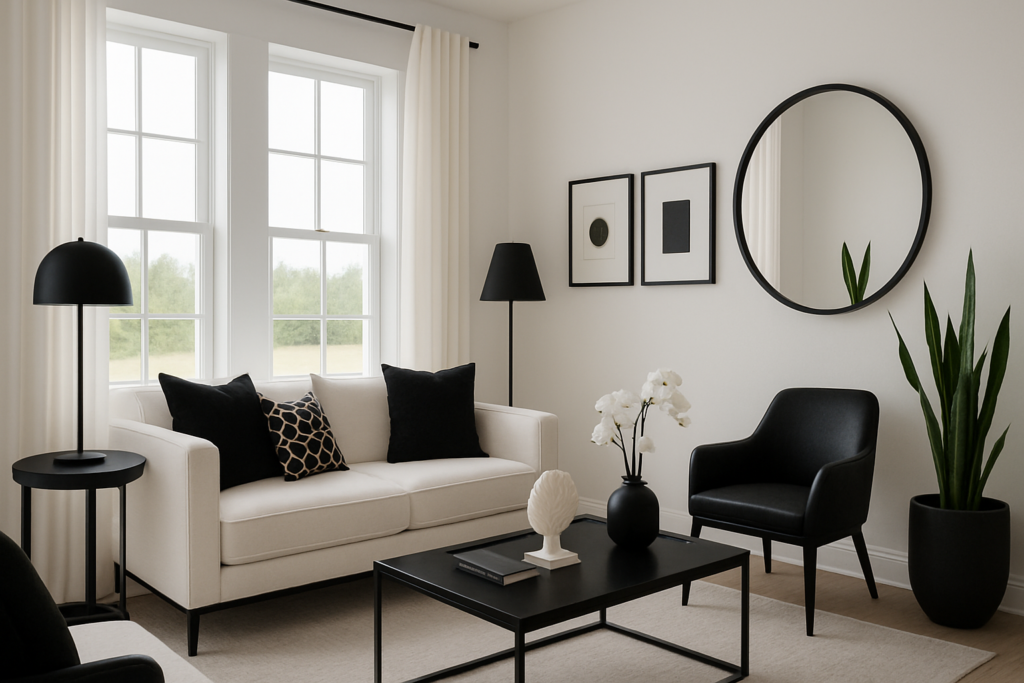Living in a small room can feel limiting, but with the right design choices, you can completely transform how spacious and open it feels. Whether you’re working with a tiny bedroom, a compact living room, or a small studio apartment, clever visual tricks and smart furniture choices can make all the difference. In this article, we’ll explore 15 powerful ideas to help you make your small room look significantly bigger.
Table of Contents
Toggle1.Use Light Colours on the Walls
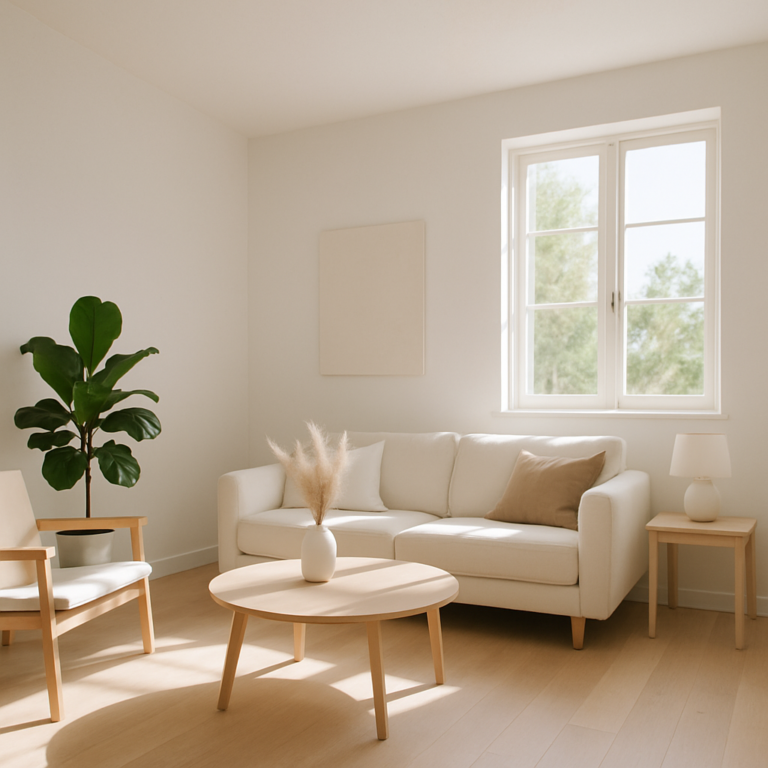
Light and neutral colors are your best friends when trying to make a room feel bigger. Shades like soft white, pale gray, light beige, or even muted pastels reflect more natural light, creating the illusion of spaciousness. Dark colors, on the other hand, tend to absorb light, making a room feel enclosed and cramped. For maximum impact, choose a flat, matte finish that diffuses light rather than absorbing it. You can even paint the ceiling a slightly lighter shade than the walls to add to the feeling of height. If you’re feeling bold, a very soft, powdery blue or sage green can add personality without shrinking the space. Keeping trims and moldings a bright white also helps frame the room beautifully. Don’t forget to test paint samples at different times of the day to see how natural light changes the color. Consistency in wall and ceiling colors ensures a seamless, more expansive look.
2. Invest in Multi-Functional Furniture

When every square foot counts, your furniture should work extra hard. Multi-functional pieces — like a sofa bed, a lift-top coffee table, or an ottoman with hidden storage — help you maximize space without sacrificing style. For example, a storage ottoman can hide blankets, books, or even off-season clothing while serving as a coffee table or extra seating. Look for beds with drawers underneath or extendable dining tables that can seat more guests when needed. This approach minimizes the number of pieces you need, making your room feel lighter and less cluttered. Multi-functional furniture also tends to have cleaner lines and smarter designs, which complement smaller spaces. Investing in quality pieces that serve multiple roles is a wise long-term strategy. It saves money and makes your room highly versatile, especially if your needs change.
3. Hang Mirrors Strategically

Mirrors are a timeless trick to make any small space feel instantly larger. By reflecting light and views, they create the illusion of extra space and depth. A large mirror placed opposite a window can double the amount of natural light in a room, making it brighter and more expansive. Even smaller mirrors arranged creatively — like a mirrored gallery wall — can open up a cramped space visually. Opt for simple frames or frameless designs to avoid adding bulk. You can also use mirrored furniture pieces like cabinets or side tables for an even more subtle expansion effect. Be mindful of what the mirror reflects; you want it to bounce pleasant views, not clutter. Mirrors work wonderfully in every type of room — from living rooms and bedrooms to narrow hallways.
4. Choose Low-Profile Furniture
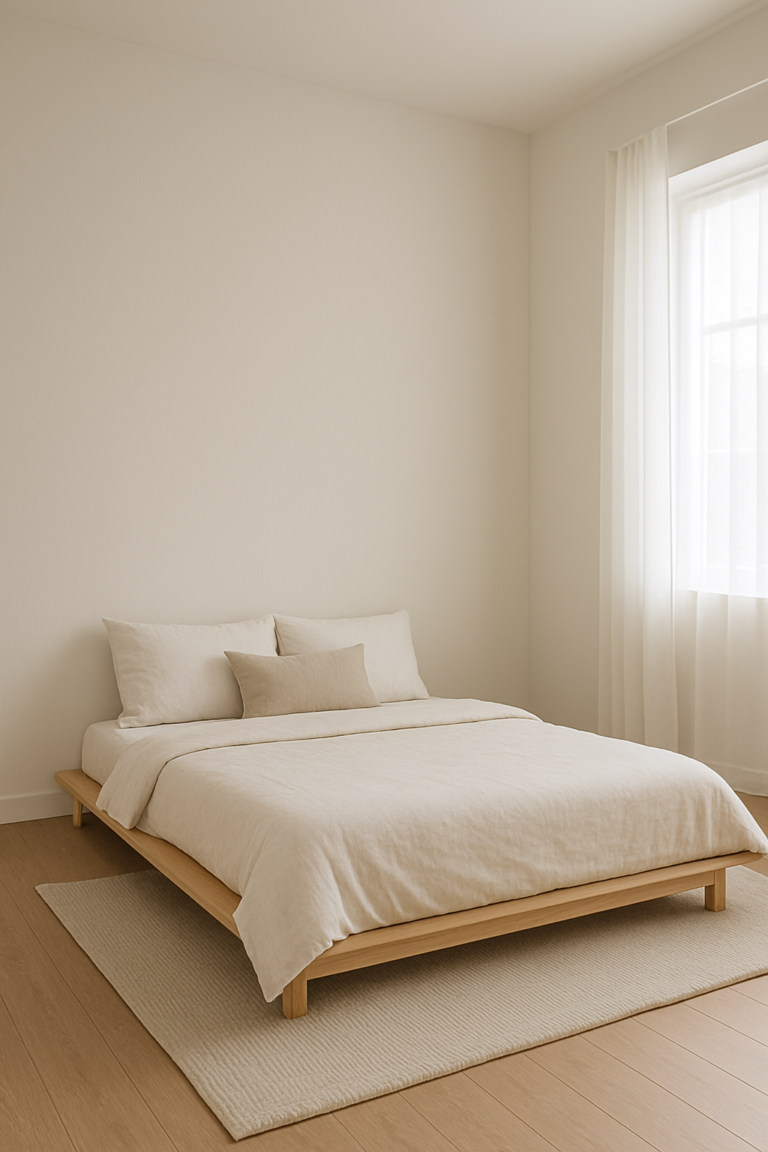
Low-profile furniture — pieces that sit closer to the ground — can do wonders for making ceilings feel taller and rooms more expansive. A low bed frame, a minimalist sofa, or a short coffee table helps open up vertical space, making the entire room feel less crowded. Look for sleek, simple lines and avoid bulky designs that eat up precious room. Choosing furniture with legs rather than solid bases allows you to see more floor space underneath, which also helps maintain an open feeling. Low furniture paired with a tall lamp or a vertical piece of art can beautifully balance out the height. It creates a feeling of greater volume without cramming too many large elements into the room. Remember: visual “lightness” is just as important as physical size when furnishing small spaces.
5. Use Vertical Solutions
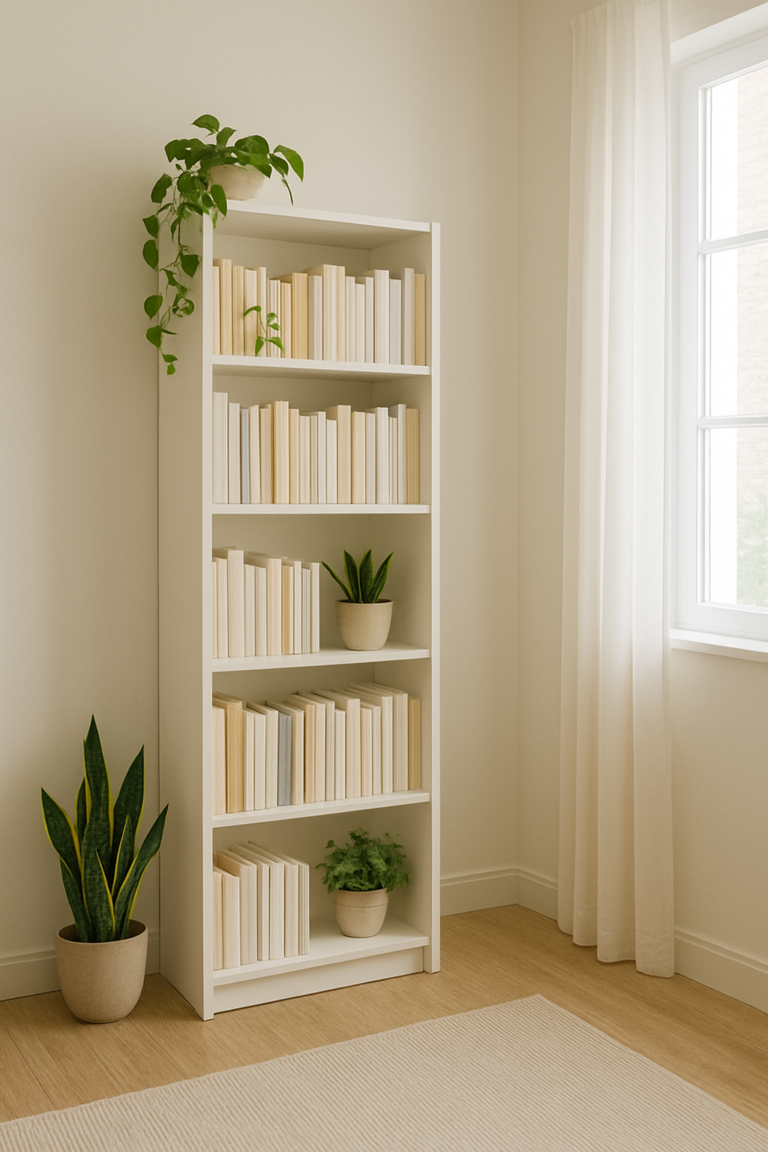
When you’re working with limited floor space, go vertical! Tall bookcases, wall-mounted shelves, and vertical storage systems draw the eye upward, giving the illusion of higher ceilings and a larger room overall. Instead of spreading storage across bulky low furniture, stack it neatly upward. Wall-mounted floating shelves are great for displaying books, decor, and plants without taking up valuable floor space. You can even add vertical pegboards for flexible storage options in home offices or kitchens. A floor-to-ceiling bookshelf not only adds storage but creates an architectural element that adds interest and height to the room. Plus, vertical storage reduces clutter by giving everything a designated place. Choose open shelving over closed cabinets when possible — open shelves feel lighter and less bulky. Keeping items neatly organized will enhance the feeling of spaciousness even more.
6. Incorporate Transparent Furniture
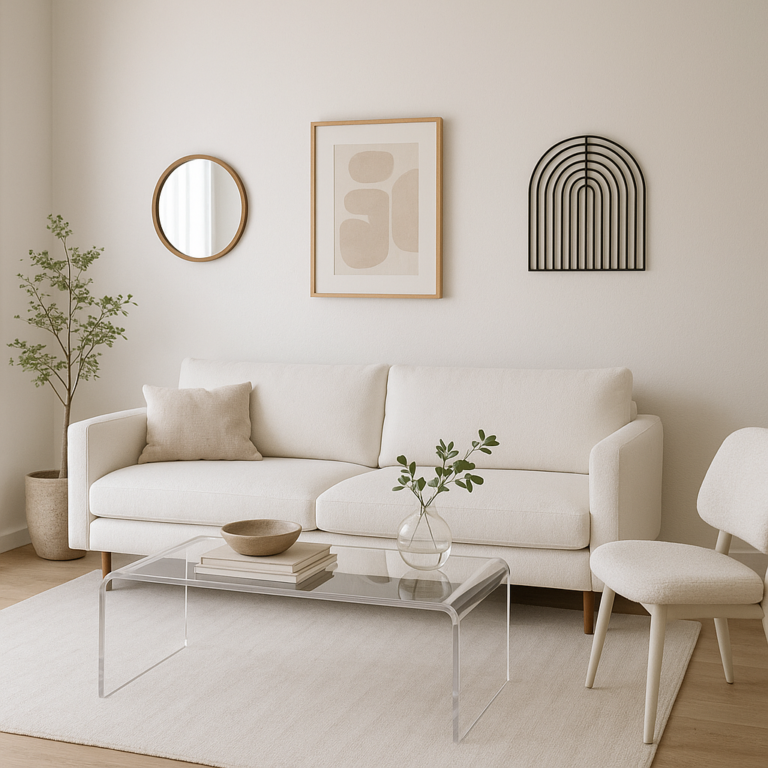
Transparent furniture pieces like acrylic, lucite, or glass tables are perfect for small spaces because they “disappear” visually. They perform all the necessary functions without taking up visual weight, keeping the room airy and open. A clear coffee table, ghost chairs, or glass-top dining tables allow the eye to travel through the furniture, making the room feel less crowded. Transparent pieces can be surprisingly durable and stylish, blending easily with any decor style, from modern to eclectic. They also work beautifully when layered over rugs or flooring you want to showcase. Using them in combination with light colors and mirrors amplifies the spacious effect even further. Opt for sleek, simple designs rather than overly ornate transparent furniture, which can sometimes still feel heavy.
7. Declutter Ruthlessly
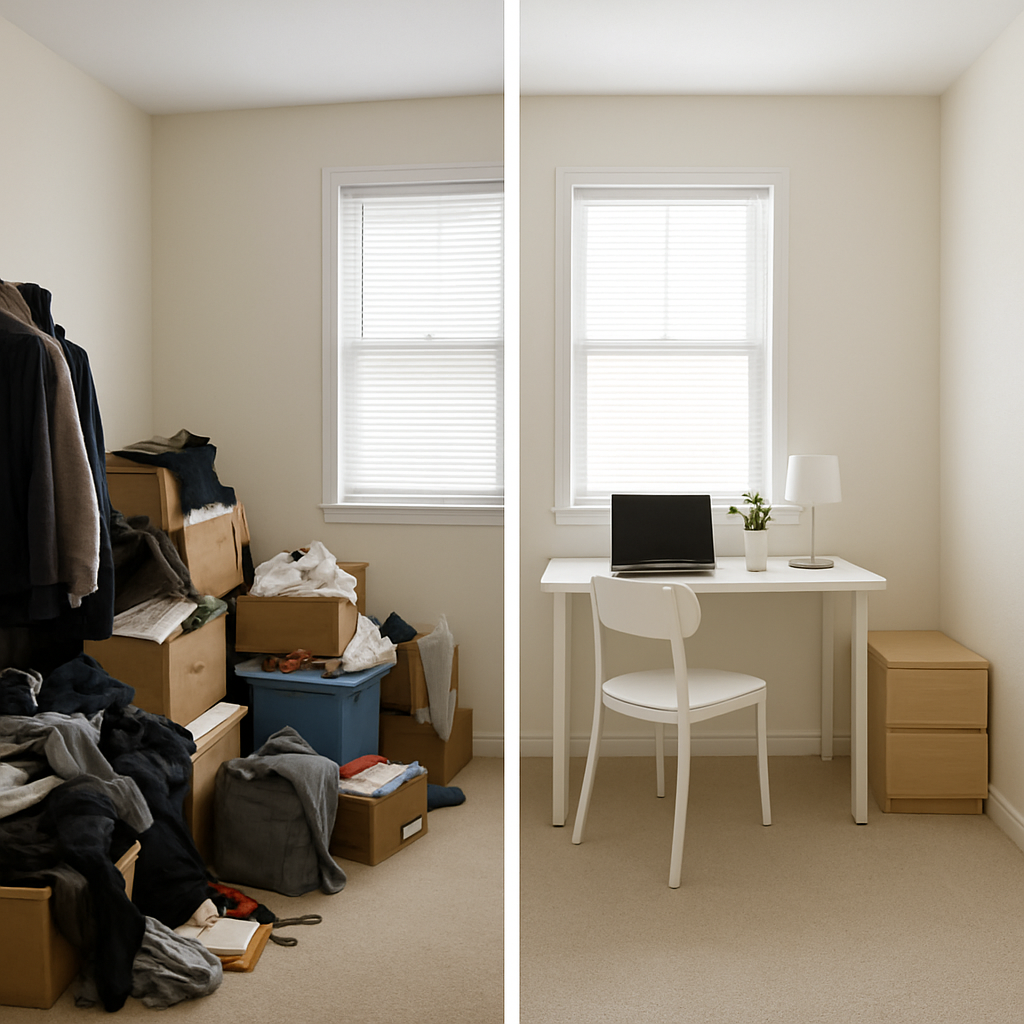
Clutter is the enemy of spaciousness. Even the most beautifully decorated small room can feel cramped if there’s too much stuff lying around. Commit to regular decluttering sessions where you edit down what’s truly necessary. Use hidden storage options like under-bed containers, baskets, or multipurpose furniture to keep daily essentials out of sight. Adopt a minimalist philosophy: fewer items allow each piece to breathe and make a greater impact. Even reducing wall decor can create a cleaner, airier vibe. Organizing items into designated “zones” helps keep things in order and visually peaceful. You might also consider using organizers inside drawers and closets to maximize hidden storage. Remember: clear surfaces and open floor space immediately make a room feel larger. Think of your small room as a curated gallery, not a crowded storage unit.
8. Maximize Natural Light
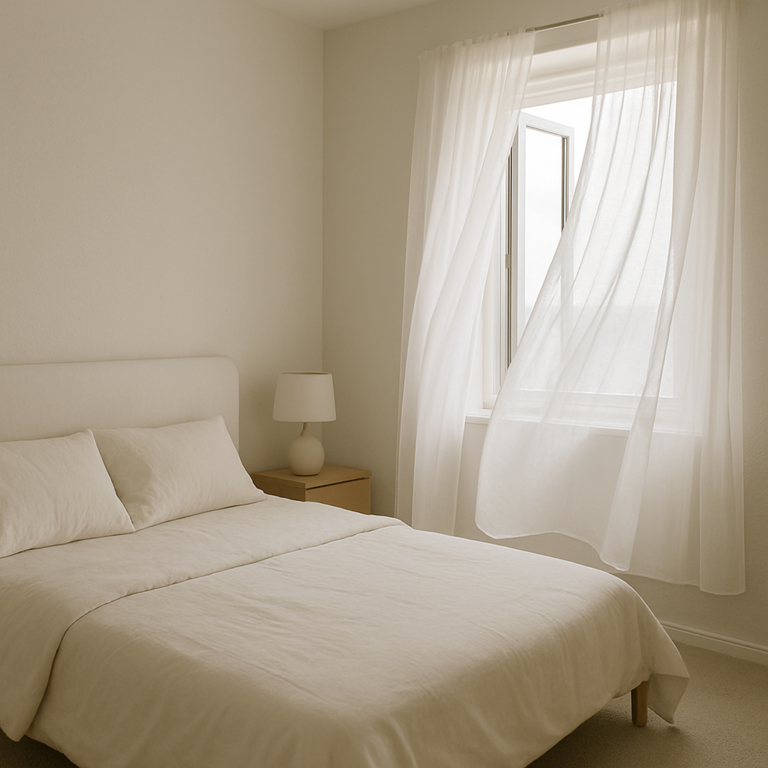
Natural light has an amazing ability to make spaces feel bigger, warmer, and more inviting. The more daylight you let in, the more expansive your room will appear. Avoid heavy drapes and opt for lightweight sheer curtains or blinds that can be easily pulled away from windows during the day. Consider using tiebacks or even installing curtain rods higher and wider than the window frame to maximize the incoming light. Clean windows regularly to let as much light in as possible. If privacy is a concern, translucent window films can provide coverage without blocking light. Mirrors can also be placed near windows to bounce natural light deeper into the room. Light flooring materials like pale woods or light tiles can further enhance the bright, open feel. Natural light instantly connects your indoor space with the outdoors, extending the visual boundary.
9. Stick to a Limited Color Palette
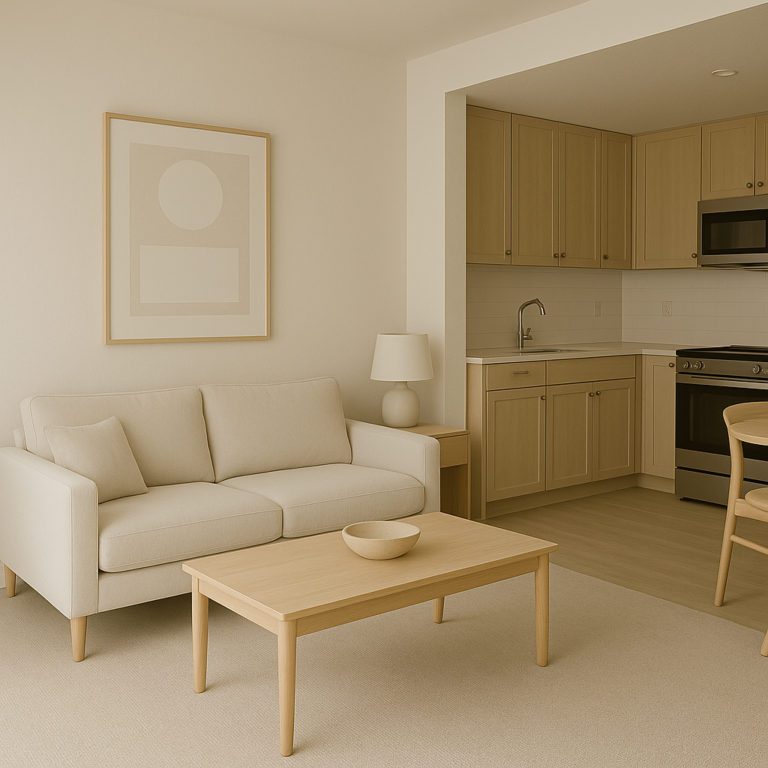
Using too many contrasting colors in a small room can create visual chaos, making it feel even smaller. Instead, select a cohesive, limited palette — generally 2 to 3 main colors — and stick to it consistently. Monochromatic or analogous color schemes (colors next to each other on the color wheel) work best. For example, pairing whites, soft grays, and muted blues can create a serene, continuous space that feels larger. Accents like throw pillows, art, or rugs should complement the main palette instead of clashing with it. Keeping walls, furniture, and accessories within the same tonal family eliminates sharp transitions that break up the room visually. Lighter tones tend to work best for making a room feel airy, but you can also add one deeper accent for depth if done sparingly. Consistency is key: smooth color transitions fool the eye into perceiving a bigger space.
10. Use Rugs to Define Spaces
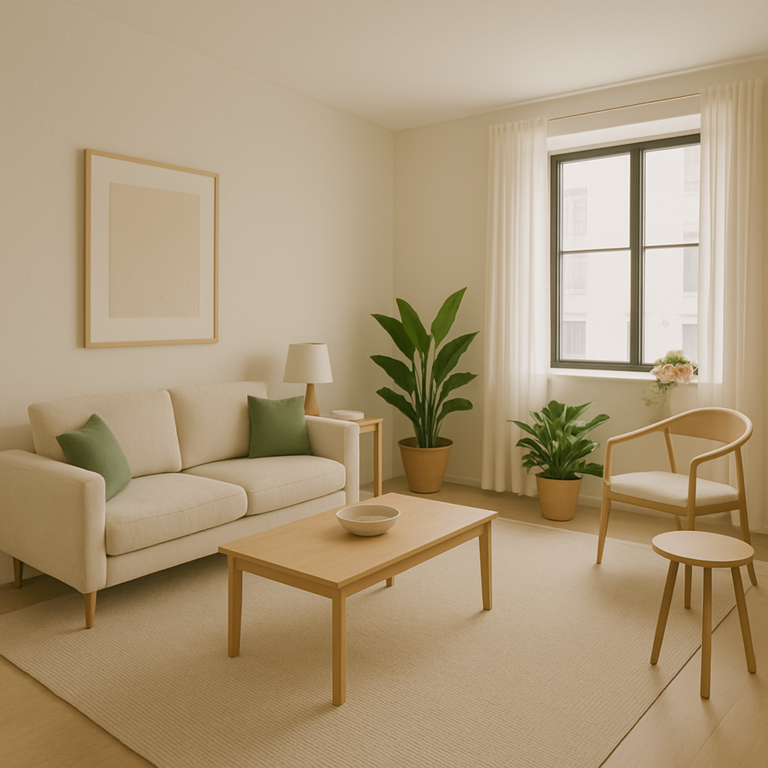
Rugs help to anchor and define different areas within a small room, especially open-plan layouts. One large rug (rather than several small ones) visually unifies the space, making it feel larger and more organized. Choose a rug that extends beyond the furniture to frame the entire area. Lighter-toned rugs or rugs with small, simple patterns work best to maintain an open look. Avoid overly dark or busy patterns, which can make a floor feel cluttered. Rugs with vertical or horizontal stripe patterns can elongate a room visually, depending on how they are placed. You can also layer a natural fiber rug underneath a softer, more colorful one to add depth without heaviness. Rugs not only make spaces cozier but subtly suggest designated “zones,” such as a living area, a study corner, or a sleeping area.
11. Install Floating Furniture
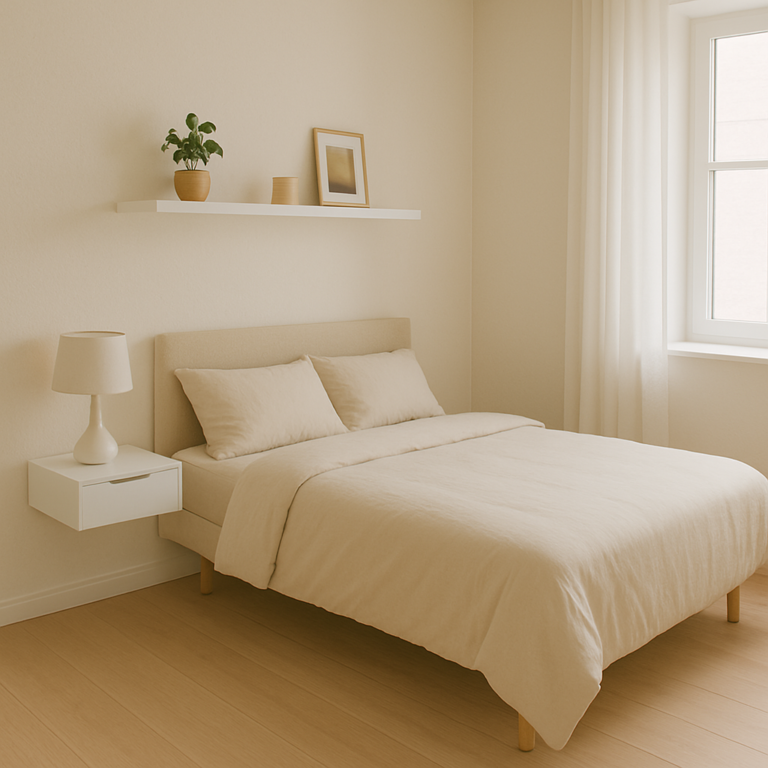
Floating furniture, like wall-mounted desks, nightstands, and shelves, keeps the floor clear, creating the illusion of a much bigger room. When you can see more of the floor, the room naturally feels less cramped and more open. Floating vanities in bathrooms or floating side tables next to beds are great examples. They also offer practical storage or surface space without the heavy, bulky appearance of traditional furniture. Installing floating furniture gives you room to place small baskets underneath for extra storage if needed, further reducing clutter. The visual “lift” makes a small space seem lighter and airier. It also gives the room a more modern, minimalist vibe that’s perfect for contemporary spaces. Choose simple, streamlined designs to maintain a cohesive look. Floating pieces are also easier to clean under — a bonus for maintenance!
12. Keep Window Treatments Simple

Window treatments play a huge role in how open a room feels. Heavy, dark curtains can make a room feel closed off and smaller, while simple, light window treatments can make it feel breezier and bigger. Stick to sheer curtains, light linen drapes, or simple blinds that allow plenty of natural light to filter through. Mount your curtain rod as close to the ceiling as possible, and extend it several inches wider than the window frame; this makes your windows look larger and lets in more light. You can also go for Roman shades in a light fabric if you want a neater look. Always avoid busy, heavy patterns in small rooms as they can overwhelm the space. Subtle textures or soft, solid colors work best. Keeping window treatments minimal ensures the eye is drawn outward toward the view instead of being stopped by visual clutter.
13. Embrace Minimalist Decor
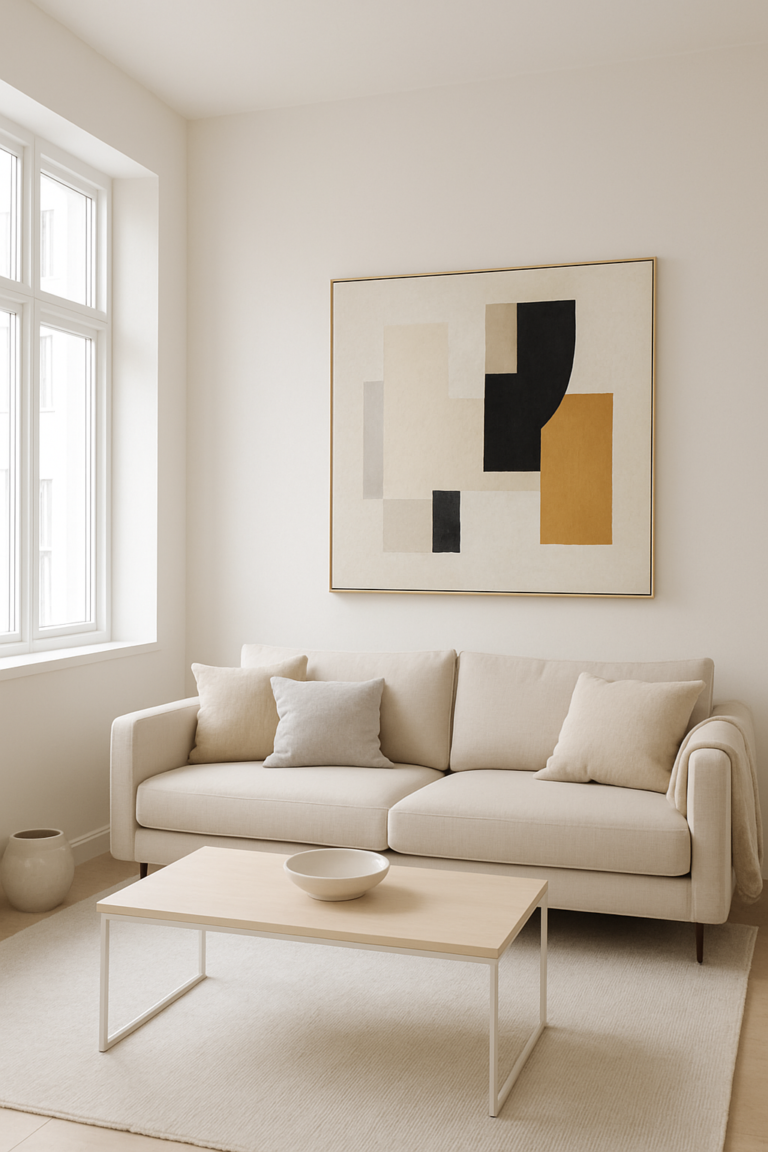
Minimalism is practically designed for small spaces. The fewer things you have on display, the bigger and calmer your room will feel. Embrace a “less is more” mindset when it comes to furniture, wall art, and accessories. Choose a few high-quality, statement pieces instead of crowding the room with lots of smaller items. Keep surfaces like coffee tables and shelves mostly clear, with just one or two intentional decorative pieces. Neutral color schemes, clean lines, and functional design are all hallmarks of minimalist decor that help make rooms feel expansive. Even your wall art should be simple — maybe one large piece rather than several small ones. Minimalist doesn’t have to mean cold or stark either — you can layer soft textures like throws and pillows to add warmth. The goal is to create a calm, open environment where every item has a purpose.
14. Play With Vertical Stripes
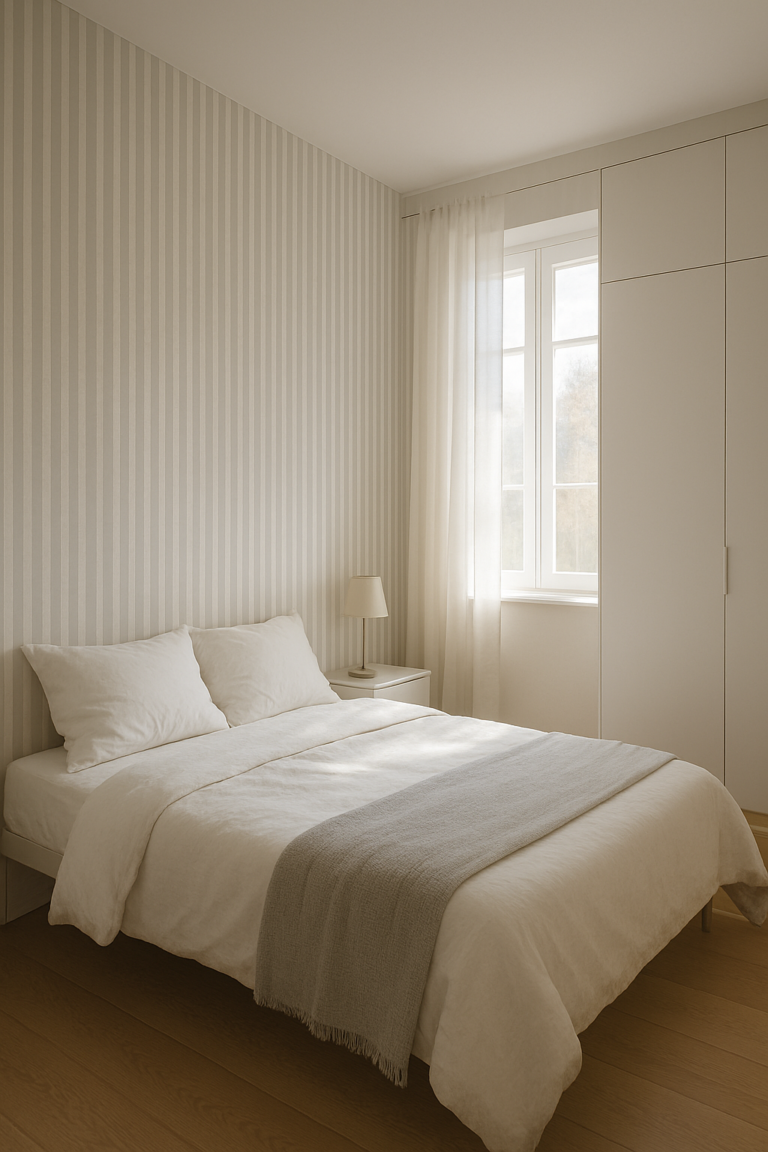
Vertical stripes on walls, curtains, or rugs naturally draw the eye upward, creating the perception of height. This clever visual trick can make a ceiling seem taller and a room feel more open and airy. You can paint vertical stripes directly on a feature wall or choose wallpaper with subtle striped patterns. Striped curtains are another great option — when they hang from ceiling height down to the floor, they stretch the space vertically. Choose lighter-colored stripes with soft contrasts to keep the look fresh and not too busy. Even a vertically striped rug can elongate the floor visually. However, be careful not to overdo it — one or two vertical elements are enough to achieve the effect without making the room feel chaotic. Stick to soft, neutral tones or muted pastels for a chic, cohesive look.
15. Choose Slim, Leggy Furniture
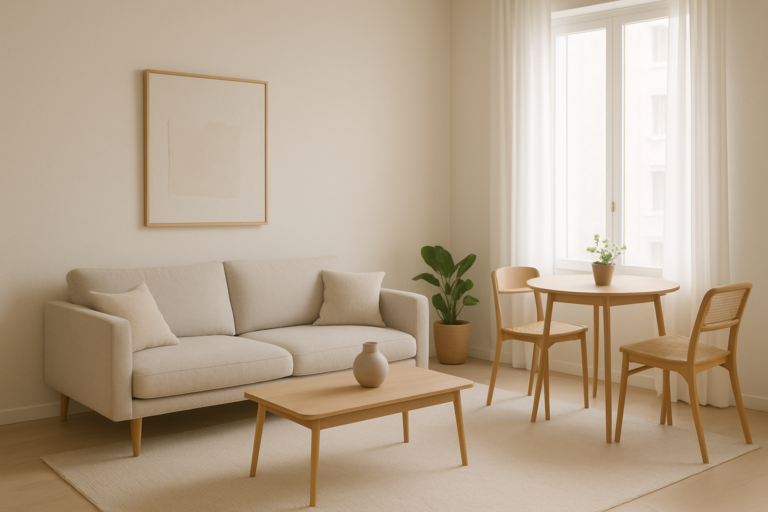
Furniture with slim profiles and exposed legs allows you to see more of the floor, making a room feel significantly larger. Instead of chunky sofas, oversized dressers, or heavy armchairs, opt for pieces that are lighter on their feet. Mid-century modern designs are especially great for this — they often feature sleek lines and elevated bases. A slim-legged sofa or armchair keeps the space feeling open and airy because your sightline isn’t interrupted by blocky, heavy forms. Dining tables and chairs with thin frames also help reduce visual clutter. The more open and breathable your furniture looks, the bigger the entire room will feel. Plus, slim furniture often has a timeless aesthetic that pairs well with various styles, from boho chic to ultra-modern.


